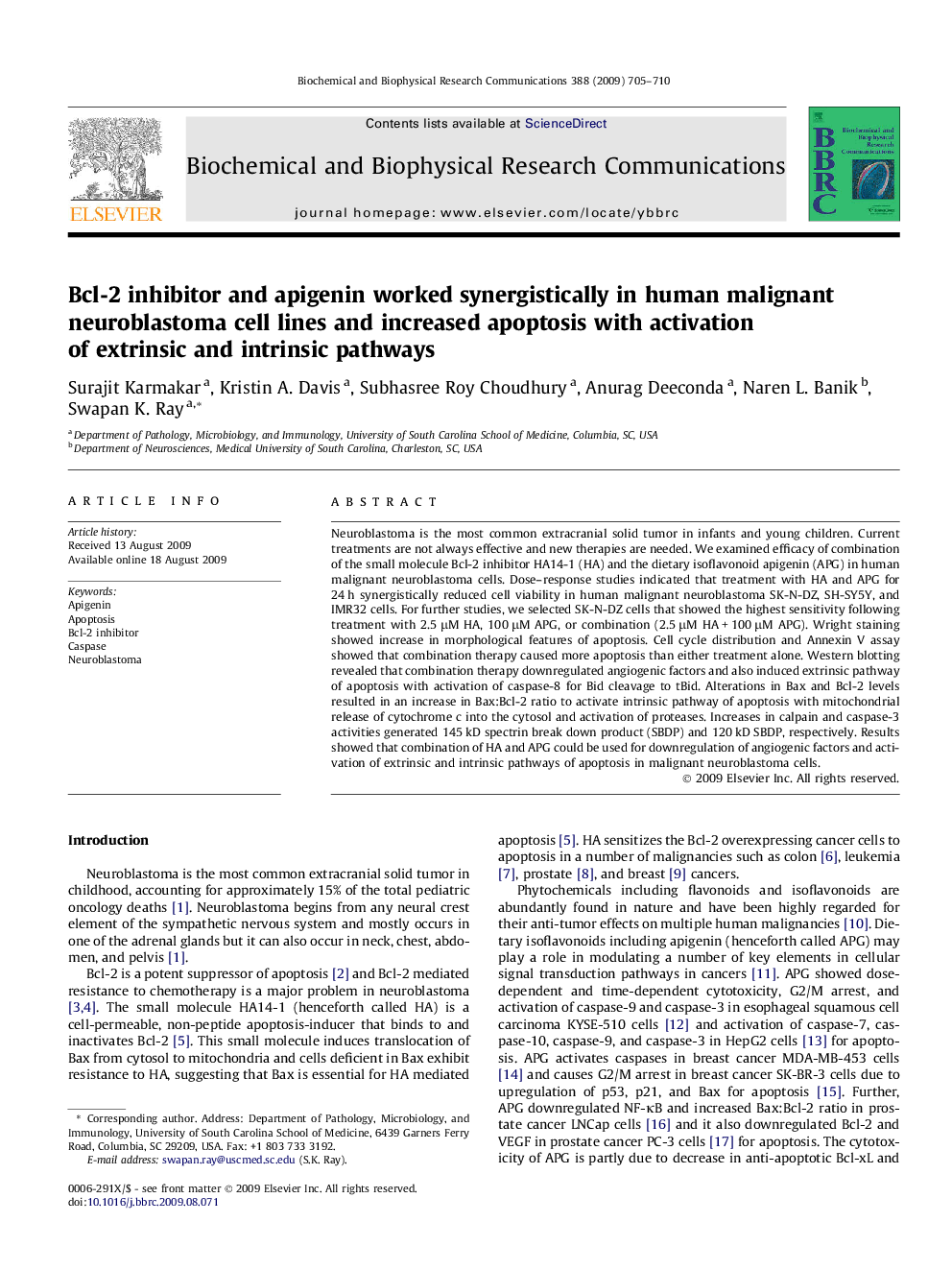| Article ID | Journal | Published Year | Pages | File Type |
|---|---|---|---|---|
| 1932959 | Biochemical and Biophysical Research Communications | 2009 | 6 Pages |
Neuroblastoma is the most common extracranial solid tumor in infants and young children. Current treatments are not always effective and new therapies are needed. We examined efficacy of combination of the small molecule Bcl-2 inhibitor HA14-1 (HA) and the dietary isoflavonoid apigenin (APG) in human malignant neuroblastoma cells. Dose–response studies indicated that treatment with HA and APG for 24 h synergistically reduced cell viability in human malignant neuroblastoma SK-N-DZ, SH-SY5Y, and IMR32 cells. For further studies, we selected SK-N-DZ cells that showed the highest sensitivity following treatment with 2.5 μM HA, 100 μM APG, or combination (2.5 μM HA + 100 μM APG). Wright staining showed increase in morphological features of apoptosis. Cell cycle distribution and Annexin V assay showed that combination therapy caused more apoptosis than either treatment alone. Western blotting revealed that combination therapy downregulated angiogenic factors and also induced extrinsic pathway of apoptosis with activation of caspase-8 for Bid cleavage to tBid. Alterations in Bax and Bcl-2 levels resulted in an increase in Bax:Bcl-2 ratio to activate intrinsic pathway of apoptosis with mitochondrial release of cytochrome c into the cytosol and activation of proteases. Increases in calpain and caspase-3 activities generated 145 kD spectrin break down product (SBDP) and 120 kD SBDP, respectively. Results showed that combination of HA and APG could be used for downregulation of angiogenic factors and activation of extrinsic and intrinsic pathways of apoptosis in malignant neuroblastoma cells.
